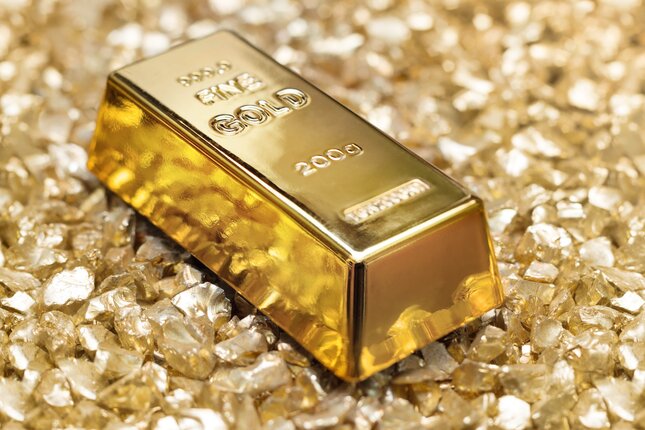- The Australian Dollar declines as the ANZ now forecasts a 25 basis points rate cut by the RBA in February.
- China's latest inflation data, which underscored rising deflationary risks, offered no support to the AUD.
- The US Nonfarm Payrolls is expected to decrease to 160K in December, down from the previous 227K.
The Australian Dollar (AUD) extends its losses for the fourth consecutive day against the US Dollar (USD), with the AUD/USD pair hovering near two-year lows on Friday. The AUD receives downward pressure as the ANZ is now forecasting a 25 basis points (bps) rate cut by the Reserve Bank of Australia (RBA) in February. Traders are now focused on US labor market data including Nonfarm Payrolls (NFP), for additional policy direction insights.
The AUD found no support from China's latest inflation data, which highlighted increasing deflationary risks. China's Consumer Price Index (CPI) increased by 0.1% year-over-year in December, slightly lower than the 0.2% rise in November, matching market expectations. Monthly, CPI inflation remained unchanged at 0% in December, aligning with estimates, following a 0.6% decline in November. Any change in Chinese economic conditions could impact the Australian markets as both nations are close trading partners.
Traders digested data showing Australia's Retail Sales, a key indicator of consumer spending, increased by 0.8% month-on-month in November, up from the 0.5% growth recorded in October (revised from 0.6%). However, the figure fell short of market expectations, which had anticipated a 1.0% rise.
The Australian Dollar faced challenges as the trimmed mean, a closely watched measure of core inflation, fell to an annual 3.2% from 3.5%, edging closer to the Reserve Bank of Australia's (RBA) target band of 2% to 3%. Markets are currently divided on whether the RBA will act in February, but a quarter-point rate cut in April is fully priced in.
Australian Dollar continues to decline amid increased hawkish mood surrounding Fed
- The US Dollar Index (DXY), which tracks the US Dollar’s (USD) performance against six major currencies, remains steady above 109.00. The Greenback gained support from hawkish Federal Open Market Committee (FOMC) Meeting Minutes and uncertainties surrounding tariff plans proposed by the incoming Trump administration.
- The latest FOMC Meeting Minutes indicated that policymakers agree that the process could take longer than previously anticipated due to recent hotter-than-expected readings on inflation and the effects of potential changes in trade and immigration policy under President-elect Trump’s administration.
- Federal Reserve Board of Governors member Michelle Bowman added her voice to a chorus of Fed speakers this week as policymakers work double-duty to try and smooth over market reactions to a much tighter pace of rate cuts in 2025 than many market participants had previously anticipated.
- Kansas Fed President Jeffrey Schmid made headlines on Thursday, stating that most of the Federal Reserve's mandated targets have recently been achieved. Schmid emphasized the need to reduce the Fed's balance sheet, suggesting that interest rate policy is approaching its long-term equilibrium. He noted that any future rate cuts should be gradual and guided by economic data.
- US Initial Jobless Claims fell to 201,000 for the week ending January 3, beating the 218,000 consensus. ADP Employment Change rose by 122K in December, though below market expectations of 140K.
- The US ISM Services PMI increased to 54.1 in November, up from 52.1, exceeding the market expectation of 53.3. The Prices Paid Index, which reflects inflation, rose significantly to 64.4 from 58.2, while the Employment Index dipped slightly to 51.4 from 51.5.
- According to Bloomberg, Federal Reserve Bank of Atlanta President Raphael Bostic stated on Tuesday that Fed officials should exercise caution with policy decisions due to uneven progress in reducing inflation. Bostic emphasized the need to lean toward keeping interest rates elevated to ensure the achievement of price stability goals.
- Richmond Fed President Thomas Barkin highlighted on Friday that the benchmark policy rate should remain restrictive until there is greater confidence that inflation will return to the 2% target. Meanwhile, Fed Governor Adriana Kugler and San Francisco Fed President Mary Daly underscored the challenging balancing act facing US central bankers as they aim to slow the pace of monetary easing this year.
- Australia's trade surplus rose to 7,079 million in November, surpassing the expected 5,750 million and the previous reading of 5,670 million (revised from 5,953 million). Exports increased by 4.8% month-on-month (MoM) in November, up from 3.5% (revised from 3.6%) in October. Meanwhile, imports grew by 1.7% MoM in November, compared to 0% (revised from 0.1%) in the previous month.
- Australia's monthly Consumer Price Index (CPI) rose 2.3% year-over-year in November, surpassing the market forecast of 2.2% and marking an increase from the 2.1% rise seen in the previous two months. This is the highest reading since August. However, the figure remains within the RBA’s target range of 2–3% for the fourth consecutive month, aided by the ongoing impact of the Energy Bill Relief Fund rebate.
Technical Analysis: Australian Dollar remains above 0.6200 near nine-day EMA
AUD/USD trades near 0.6200 on Friday, maintaining a bearish tone as it stays within a descending channel on the daily chart. The 14-day Relative Strength Index (RSI) hovers just above 30, indicating a risk of heightened bearish momentum.
Regarding its support, the AUD/USD pair could approach the lower boundary of the descending channel around the 0.5960 level.
The immediate resistance is seen near the nine-day Exponential Moving Average (EMA) at 0.6216, followed by the 14-day EMA at 0.6230. A stronger resistance level lies near the upper boundary of the descending channel, around 0.6240.
AUD/USD: Daily Chart
Australian Dollar PRICE Today
The table below shows the percentage change of Australian Dollar (AUD) against listed major currencies today. Australian Dollar was the weakest against the US Dollar.
| USD | EUR | GBP | JPY | CAD | AUD | NZD | CHF | |
|---|---|---|---|---|---|---|---|---|
| USD | 0.08% | 0.21% | 0.16% | 0.17% | 0.08% | 0.19% | 0.07% | |
| EUR | -0.08% | 0.12% | 0.05% | 0.08% | -0.01% | 0.09% | -0.02% | |
| GBP | -0.21% | -0.12% | -0.02% | -0.04% | -0.12% | -0.02% | -0.14% | |
| JPY | -0.16% | -0.05% | 0.02% | -0.00% | -0.08% | 0.00% | -0.10% | |
| CAD | -0.17% | -0.08% | 0.04% | 0.00% | -0.09% | 0.02% | -0.10% | |
| AUD | -0.08% | 0.00% | 0.12% | 0.08% | 0.09% | 0.10% | -0.01% | |
| NZD | -0.19% | -0.09% | 0.02% | -0.01% | -0.02% | -0.10% | -0.12% | |
| CHF | -0.07% | 0.02% | 0.14% | 0.10% | 0.10% | 0.01% | 0.12% |
The heat map shows percentage changes of major currencies against each other. The base currency is picked from the left column, while the quote currency is picked from the top row. For example, if you pick the Australian Dollar from the left column and move along the horizontal line to the US Dollar, the percentage change displayed in the box will represent AUD (base)/USD (quote).
Economic Indicator
Nonfarm Payrolls
The Nonfarm Payrolls release presents the number of new jobs created in the US during the previous month in all non-agricultural businesses; it is released by the US Bureau of Labor Statistics (BLS). The monthly changes in payrolls can be extremely volatile. The number is also subject to strong reviews, which can also trigger volatility in the Forex board. Generally speaking, a high reading is seen as bullish for the US Dollar (USD), while a low reading is seen as bearish, although previous months' reviews and the Unemployment Rate are as relevant as the headline figure. The market's reaction, therefore, depends on how the market assesses all the data contained in the BLS report as a whole.
Read more.Next release: Fri Jan 10, 2025 13:30
Frequency: Monthly
Consensus: 160K
Previous: 227K
Source: US Bureau of Labor Statistics
America’s monthly jobs report is considered the most important economic indicator for forex traders. Released on the first Friday following the reported month, the change in the number of positions is closely correlated with the overall performance of the economy and is monitored by policymakers. Full employment is one of the Federal Reserve’s mandates and it considers developments in the labor market when setting its policies, thus impacting currencies. Despite several leading indicators shaping estimates, Nonfarm Payrolls tend to surprise markets and trigger substantial volatility. Actual figures beating the consensus tend to be USD bullish.
Information on these pages contains forward-looking statements that involve risks and uncertainties. Markets and instruments profiled on this page are for informational purposes only and should not in any way come across as a recommendation to buy or sell in these assets. You should do your own thorough research before making any investment decisions. FXStreet does not in any way guarantee that this information is free from mistakes, errors, or material misstatements. It also does not guarantee that this information is of a timely nature. Investing in Open Markets involves a great deal of risk, including the loss of all or a portion of your investment, as well as emotional distress. All risks, losses and costs associated with investing, including total loss of principal, are your responsibility. The views and opinions expressed in this article are those of the authors and do not necessarily reflect the official policy or position of FXStreet nor its advertisers. The author will not be held responsible for information that is found at the end of links posted on this page.
If not otherwise explicitly mentioned in the body of the article, at the time of writing, the author has no position in any stock mentioned in this article and no business relationship with any company mentioned. The author has not received compensation for writing this article, other than from FXStreet.
FXStreet and the author do not provide personalized recommendations. The author makes no representations as to the accuracy, completeness, or suitability of this information. FXStreet and the author will not be liable for any errors, omissions or any losses, injuries or damages arising from this information and its display or use. Errors and omissions excepted.
The author and FXStreet are not registered investment advisors and nothing in this article is intended to be investment advice.
Recommended content
Editors’ Picks

EUR/USD holds lower ground below 1.0300 as traders await US NFP
EUR/USD holds lower ground below 1.0300 in European trading hours on Friday. Concerns over US President-elect Trump's policies and hawkish Fed expectations favor the US Dollar ahead of the critical US Nonfarm Payrolls data release.

GBP/USD falls back below 1.2300, US NFP eyed
GBP/USD is falling back below 1.2300 in the European morning on Friday, failing to sustain the rebound. The pair remains vulnerable amid persistent US Dollat strength and the UK bond market turmoil. The focus now shifts to the US labor market data for fresh trading directives.

Gold price sticks to intraday gains near multi-week top; US NFP in focus
Gold price attracts buyers for the fourth straight day on Friday amid some haven flows. The Fed’s hawkish stance, elevated US bond yields and a bullish USD should cap gains. Traders might also opt to wait for the release of the key US NFP report later this Friday.

Nonfarm Payrolls forecast: US December job gains set to decline sharply from November
US Nonfarm Payrolls are expected to rise by 160K in December after jumping by 227K in November. US jobs data is set to rock the US Dollar after hawkish Fed Minutes published on Wednesday.

How to trade NFP, one of the most volatile events Premium
NFP is the acronym for Nonfarm Payrolls, arguably the most important economic data release in the world. The indicator, which provides a comprehensive snapshot of the health of the US labor market, is typically published on the first Friday of each month.

Best Forex Brokers with Low Spreads
VERIFIED Low spreads are crucial for reducing trading costs. Explore top Forex brokers offering competitive spreads and high leverage. Compare options for EUR/USD, GBP/USD, USD/JPY, and Gold.
